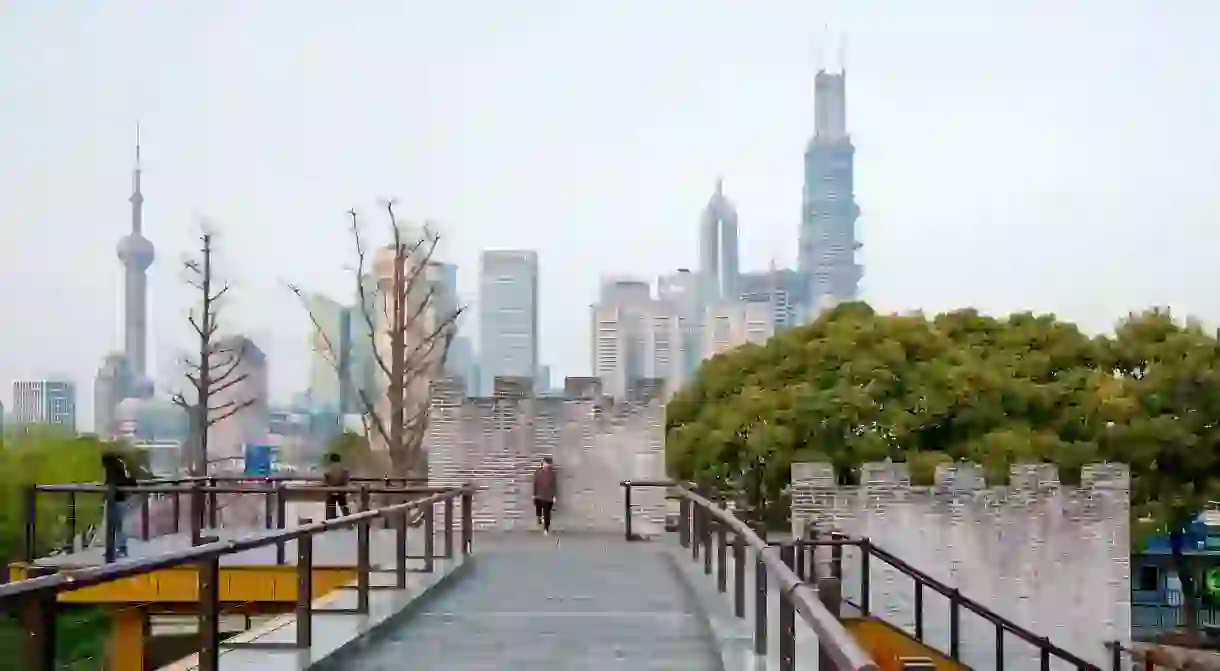A Walking Tour of the Bund's Architecture and Landmarks

No place in Shanghai reflects the city’s evolution quite like the Bund, where every building and landmark tells a story.
The Bund is a magnet that constantly pulls crowds to its promenade, clinging to the curves of the Huangpu River. And no surprise: this seductive spot in downtown Shanghai is where the city’s urban DNA is on display, from its colonial days as the high-flying financial hub of the Far East to Lujiazui’s cyberpunk skyline across the river in Pudong. This microcosm of history and revival is played out along East Zhongshan No 1 Road and the riverfront promenade, where Culture Trip takes you on a walking tour starting with the city’s signal tower at the Bund’s south end.
Gutzlaff Signal Tower
Building

At the southern end of the Bund, the 1907 Gutzlaff Signal Tower is an Art Deco oddity plunked on the pavement where East Zhongshan No 1 and No 2 roads meet, across from the bevy of architectural beauties standing in formation. But this tall structure with its red-brick stripes once had an important purpose: it provided typhoon and other weather warnings to ships on the Huangpu River, until it was decommissioned in 1956.
Bund Bull
Architectural Landmark

In the nearby Bund Financial Square sits a newer icon. The bronze Bund Bull is the work of sculptor Arturo Di Modica, who also designed Charging Bull in New York City’s financial district. When Shanghai’s version was installed in 2010, Di Modica said the smaller sculpture was a “younger” and “stronger” take on his original (although it’s double the weight, at a hefty 6,000 kilograms or six tons). It also has a curlier tail and leans to the right, not the left. There’s a cultural fit, too, as for the Chinese, the bull symbolises perseverance, diligence and wealth.
Waldorf Astoria Shanghai
Hotel, Luxury

Continuing north from the Bund Bull on East Zhongshan No 1 Road will take you to the Bund’s imposing ‘museum of buildings’ – more than two dozen of them. They’re lit up every evening from 5.30pm until 10pm, when everything turns back to black. Each edifice here has a distinct architectural style and a storied past. Many are still financial institutions, while others house high-end hotels and restaurants serving superb cuisine along with dazzling riverfront views. The former Shanghai Club (No 2) was founded as a men’s club for British residents. The six-storey Baroque Revival structure, built in 1909, has now been transformed into the Waldorf Astoria Shanghai on the Bund. It features an astounding marble ‘long bar’ – a replica of the original – on its main floor.
China Merchants Bank Building
Architectural Landmark

Steps away from the Waldorf Astoria’s grand entrance is the China Merchants Bank Building (No 6). The 1897 Gothic Revival stunner is one of the Bund’s oldest establishments. Today, the dove-grey building houses a number of businesses.
The Customs House
Architectural Landmark

You don’t need to wander too far from the China Merchants Bank Building before you’ll see (and hear) echoes of Big Ben, London’s Elizabeth Tower with its Great Clock and Great Bell. It served as inspiration for the former Customs House (No 13). This 1927 Neoclassical revamp of the 1857 original has four clocks and a bell called Big Ching that chimes every 15 minutes.
Swatch Art Peace Hotel
Architectural Landmark

The Swatch Art Peace Hotel (No 19) was originally called the Palace Hotel when it was built in 1908 and hosted the First International Opium Conference. Despite its name, the building is no longer a luxury hotel. Swiss watch manufacturer Swatch Group uses the space as a residence for international contemporary artists and also has a boutique at street level.
Fairmont Peace Hotel
Hotel

Cross buzzing Nanjing Road East to explore the Fairmont Peace Hotel, famed for its patinated copper roof and originally called Sassoon House after its owner Victor Sassoon. Construction started in 1926, and the six top floors of the 10-storey building later became the Cathay Hotel, which opened just a month before the Wall Street Crash of 1929.
Huangpu Park
Park

For a break from all the brick and granite – and there’s plenty more to see – cross East Zhongshan No 1 Road and head north along the promenade to Huangpu Park where the waters of the Huangpu River and Suzhou Creek mingle. Despite its diminutive size, this green space has gravitas. It’s the city’s oldest and smallest park and China’s first park to be opened to the public. A 1917 sign bearing the park’s rules stipulated that the former gardens were reserved for ‘the foreign community’ and that dogs and bicycles were prohibited.
Monument to the People's Heroes
Architectural Landmark

In the near distance along the promenade from Huangpu Park is the hulking Monument to the People’s Heroes, a 24-metre (79-foot) structure modelled on the form of three rifles butted up against each other vertically. It’s a tranquil place from which to ponder Shanghai’s past and wonder what the future holds for this ever-evolving city.













